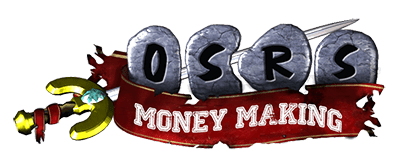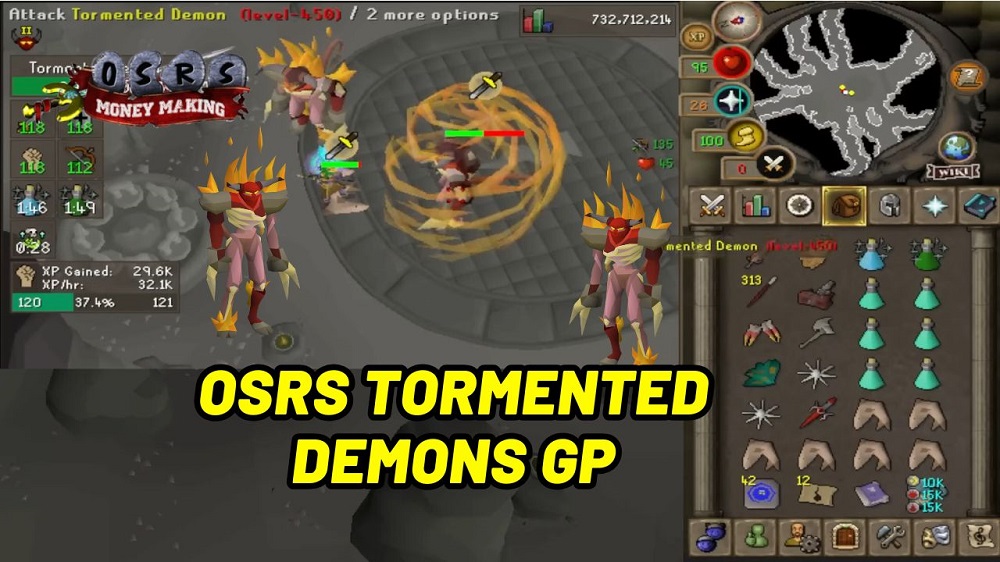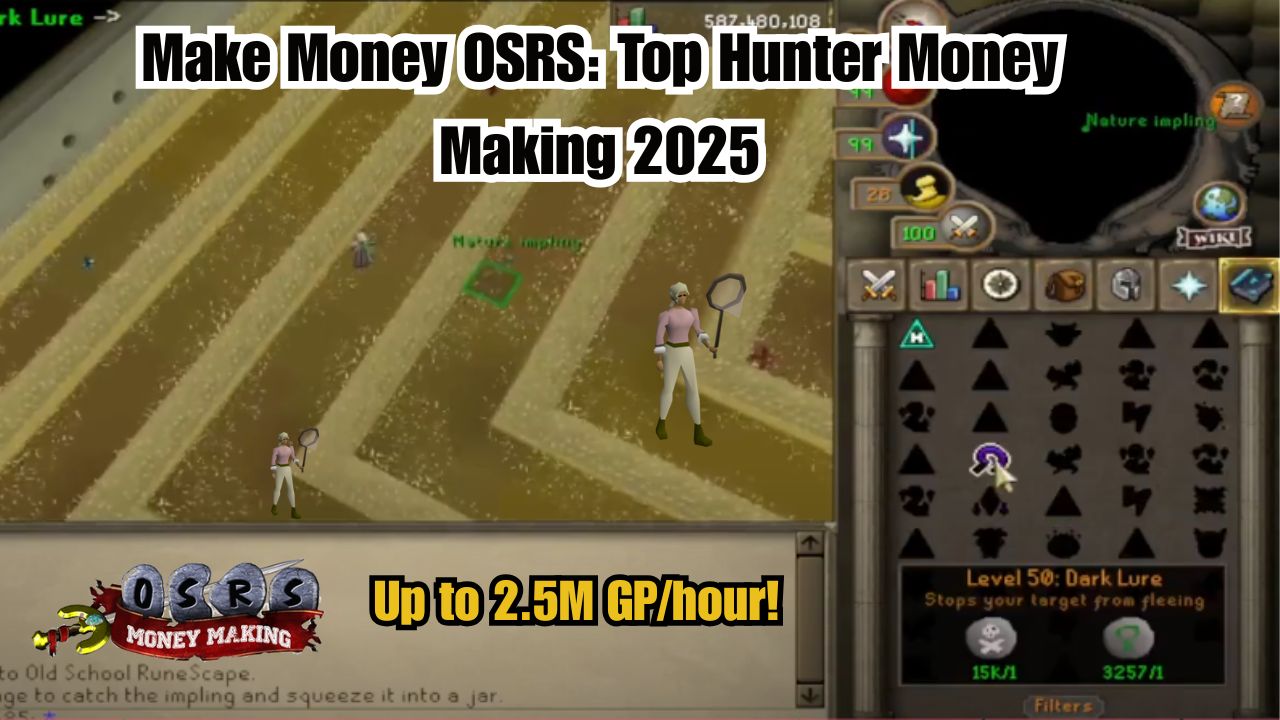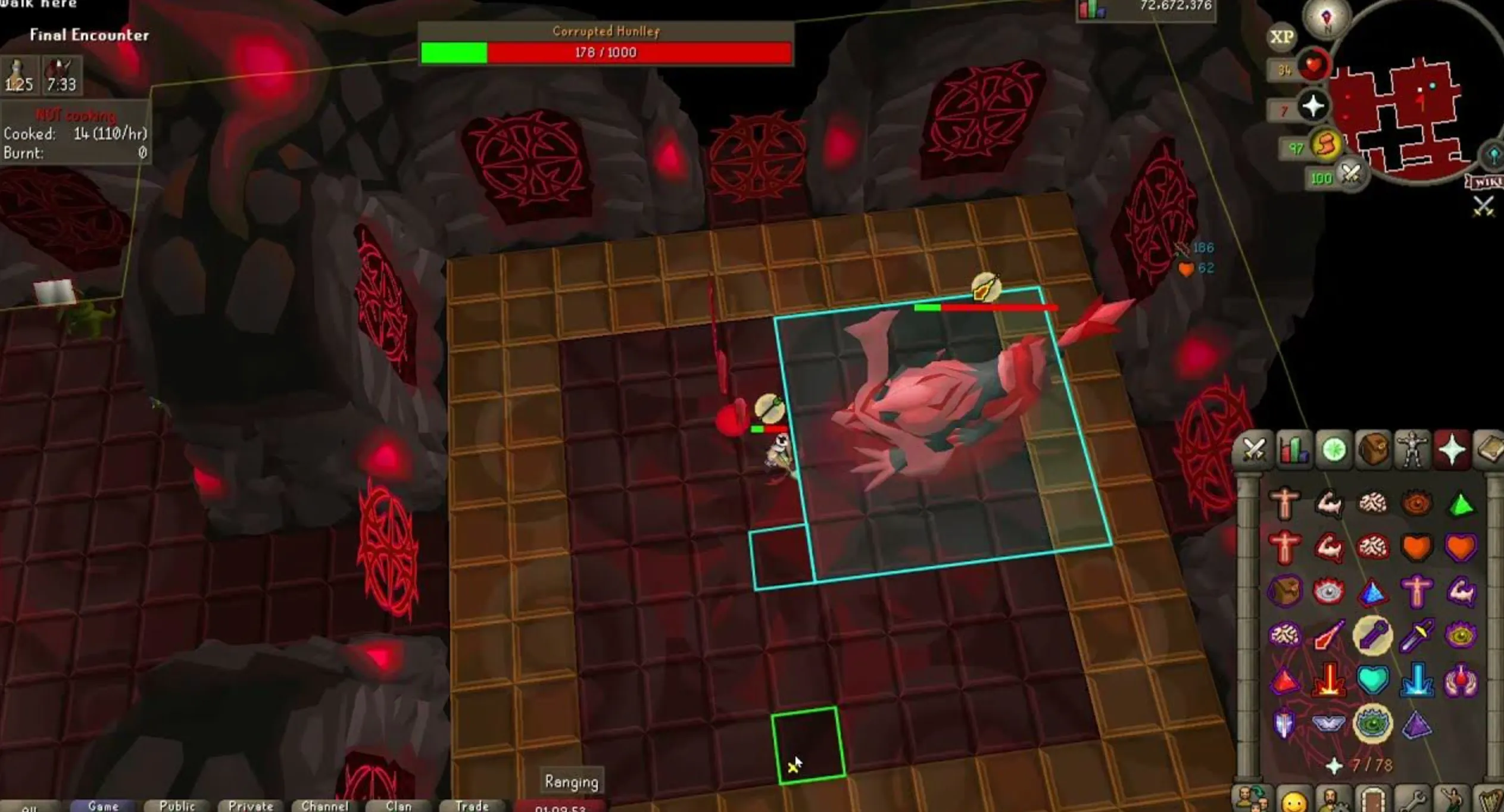Your cart is empty
High alching combat bracelets at the fountain of rune

In Old School RuneScape (OSRS), players are constantly on the lookout for effective money-making methods to maximize their in-game wealth. One popular strategy involves high alching combat bracelets at the Fountain of Rune, a method that not only provides a steady stream of gold but also allows players to train their Magic skill efficiently. By utilizing this method, players can expect to earn between 200K to 600K GP per hour, depending on their efficiency and market fluctuations. The beauty of this approach lies in the dual benefits of coin generation and skill advancement.
High alching combat bracelets offers a unique opportunity for players, as combat bracelets are relatively inexpensive and yield a decent alchemy value. On average, players can anticipate around 400K GP per hour, while those who have mastered the process can push their profits upwards of 600K GP. With the Fountain of Rune providing a convenient location for alching and easy access to supplies, this method is ideal for both novice and experienced players seeking to enhance their financial status in the game.
Requirements
To engage effectively in money-making methods in Old School RuneScape (OSRS), players must meet certain prerequisites that can significantly enhance their efficiency and profitability. The requirements can vary depending on the specific method being utilized, but here are the typical categories:
- Combat Level: Many money-making methods, particularly those involving monster slaying or player-versus-player (PvP) activities, require a certain combat level. For example, a combat level of 70+ is often recommended for slaying dragons or high-level bosses.
- Skill Levels: Various methods require specific skills to be leveled up. For instance, achieving level 90 Mining is essential for mining runite ore, which is highly profitable. Each skill can open different money-making avenues, such as:
- Mining: Levels required for different ores (e.g., level 60 for adamantite).
- Fishing: Level 76 for sharks, a lucrative fish.
- Smithing: Level 85 for creating rune items.
- Herblore: Level 82 for making potions that are in high demand.
- Quests: Some money-making methods are tied to quest completion. For example, completing the quest “Dragon Slayer” is necessary to wear rune equipment, which can lead to profitable activities.
- Access to Areas: Certain areas may be locked behind quest requirements or skills. For instance, being able to access the Kourend region requires completion of a few quests, and the area is known for its rich resources.
- Membership: Many of the most profitable methods in OSRS require a paid membership. Members have access to more skills, quests, and areas that generally yield higher profits.
- Equipment: Having the right gear can significantly enhance efficiency. For instance, using a dragon scimitar boosts combat performance, and wearing a full graceful set can improve the efficiency of running around for gathering resources.
Overall, assessing these requirements is crucial to determine the most suitable money-making strategies and to maximize profits in the game.
Required Items
To effectively utilize the money-making method in Old School RuneScape (OSRS), players will need to gather specific items that enhance their efficiency and profitability. Here’s a detailed breakdown of the necessary items:
- Goldsmith Gauntlets: These gloves are essential for maximizing experience and profit when smelting gold bars. They are obtained by completing the Family Crest quest and give a 30% experience boost while using the furnace.
- Furnace: Players will need access to a furnace to smelt ores into bars. Common locations include the Varrock West and Edgeville furnaces.
- Ore: The main currency for this method is ore. Depending on the specific method, players should gather ores like Gold ore, Iron ore, or Silver ore. The type of ore will influence the profit margin and the required levels for mining.
- Pickaxe: A pickaxe is necessary for mining ores. Players can use any pickaxe, but a higher tier pickaxe like the Dragon pickaxe will increase mining speed, making the process more efficient.
- Teleportation Items: Items like Amulet of Glory or Varrock Teleport runes will save time when traveling to and from mining locations and the furnace.
- Food: Depending on the chosen location, players may encounter aggressive monsters. Bring food items, such as Sharks or Brews, to sustain health while mining and smelting.
- Coins: Some methods may require an initial investment. Having enough coins to purchase ores or supplies from other players in the Grand Exchange is crucial.
- Skill Enhancing Items: Items like the Varrock Armor can provide bonuses when mining or smelting, such as a chance to smelt an extra bar when using a furnace.
By gathering these required items, players can significantly increase their efficiency and maximize their profits in the chosen money-making method.
Required Quests
To maximize your money-making potential in Old School RuneScape (OSRS), it’s essential to complete certain quests. These quests not only unlock specific skills and areas but also provide access to valuable items or resources that can significantly boost your profit margins. Below are the key quests you should focus on:
-
Animal Magnetism
This quest is crucial for obtaining the Bonecrusher and the Salve amulet, both of which enhance your efficiency in combat and training. It allows the use of summoning familiars to gather materials more effectively.
-
Death Plateau
Completing this quest opens up access to the Death Plateau where you can train Agility and unlock shortcuts that can save valuable time while skilling or farming.
-
Fairytale I – Growing Pains
This quest is important as it allows you to unlock the Magic secateurs, which increase your herb yield when harvesting, ultimately enhancing your profit margins from herb farming.
-
Plague City
Completing this quest grants access to the West Ardougne and opens up numerous farming opportunities including the Ardougne Cloak, which provides additional benefits.
-
What Lies Below
This quest is necessary to access the Secrets of the Deep area and provides valuable items and experiences that can significantly enhance your gold-making strategies.
-
Recipe for Disaster
Completing this lengthy quest unlocks numerous rewards, including access to the Food of the Gods and the ability to use the Barrows gloves, which are among the best gloves in the game.
These quests are foundational for optimizing your money-making methods in OSRS. Completing them not only enhances your character’s capabilities but also opens up new avenues for profit.
Profit Calculation
In Old School RuneScape (OSRS), accurately calculating profits is essential for determining the viability of any money-making method. Below is a detailed breakdown of how to effectively calculate your profits from a chosen method.
1. Understanding Input Costs: Start by determining all the costs associated with your chosen method. This includes:
- Resource Costs: The price of any raw materials or items needed to begin the method. For example, if you’re crafting items, consider the cost of materials like logs or ores.
- Equipment Costs: If you need specific gear, factor in the cost of purchasing or repairing it. For instance, using the best pickaxe or hatchet may yield better results but at a higher upfront cost.
- Transport Costs: Consider any expenses related to traveling to the location where you’ll be making money. This might include runes for teleports or the cost of using a charter ship.
2. Estimating Time Spent: Time is an important factor in profit calculations. Calculate how long it takes to complete a cycle of your method:
- For example, if you’re training Fishing, calculate how long it takes to catch a full inventory of fish.
- Divide the total time into smaller intervals to find an average profit per hour.
3. Revenue Generation: Next, assess how much income you’ll generate from the method:
- Item Value: Check the current market price of items you’ll be selling. Use the Grand Exchange or other trading platforms to find the average selling price.
- Sell Quantity: Determine how many items you can produce in a given timeframe. For instance, if you can craft 100 items per hour and each sells for 5,000 coins, your hourly revenue would be 500,000 coins.
4. Profit Calculation Formula: With the above data, you can calculate your profit using the following formula:
Profit = (Total Revenue) - (Total Costs)
For instance, if your total revenue from crafting items is 500,000 coins and your total costs (including materials, equipment, and transportation) is 200,000 coins, your profit would be:
Profit = 500,000 - 200,000 = 300,000 coins
5. Analyzing Break-even Points: It’s also helpful to calculate how long it will take to recoup your initial investment. This can help determine if a method is worth pursuing:
- If your initial costs are 200,000 coins and you make 300,000 coins in profit per hour, you’ll break even in about 40 minutes.
6. Market Fluctuations: Regularly keep an eye on the market trends as they can affect the profitability of your method. Prices can fluctuate based on demand, supply, and game updates. Adjust your calculations accordingly to stay profitable.
By following these steps and keeping track of your numbers, you can optimize your money-making strategies in OSRS and maximize your profits efficiently.
Output
The output for the money-making method discussed in OSRS can vary significantly based on several factors, including market demand, your efficiency, and time invested. Here’s a breakdown of what you can expect:
- Hourly Profit: Depending on the method utilized, players can expect to earn between 100,000 to 1,000,000 GP per hour. For example, gathering Blisterwood logs might yield around 200,000 GP per hour, while high-level bossing could potentially net 1,000,000 GP or more.
- Item Quantity: The total amount of items produced or gathered during the activity plays a crucial role. For instance, if you’re mining Runite ore, you could collect approximately 20-30 ores per hour, depending on your Mining level and efficiency.
- Sellable Items: After completing the method, you will have a selection of items that can be sold on the Grand Exchange. For example, if you’re crafting Nature runes, you can expect to create about 500 runes per hour, which can then be sold for around 250,000 GP.
- Time Investment: The method’s output also depends on how much time you dedicate to it. A consistent play session of 4-6 hours will yield greater profits compared to sporadic play, maximizing your output.
- Market Fluctuations: Prices on the Grand Exchange can vary due to supply and demand. Therefore, it’s essential to track the prices over time. For instance, Dragon bones might sell for 4,000 GP on a Monday but rise to 6,000 GP by the weekend due to high demand for prayer training.
- Profit Margin: Calculate the profit margin by subtracting the costs of materials and overhead from your total earnings. For example, if your total income from selling Green Dragonhide is 500,000 GP and your expenses are 200,000 GP, your profit margin would be 300,000 GP.
In summary, the output of this money-making method can be lucrative, especially when executed efficiently and with market awareness. Keeping track of your profits and adapting to market trends will enhance your overall earnings in OSRS.
Tips for Efficiency
- Plan Your Route: Before starting your money-making method, map out your route to minimize travel time. Use teleportation methods such as the Amulet of Glory or the Fairy Rings to quickly reach your destination.
- Use Efficient Inventory Space: Optimize your inventory by bringing only the necessary items. For example, if you’re gathering resources, consider using a toolbelt or bank access to minimize trips.
- Utilize Hotkeys: Familiarize yourself with the game’s hotkeys for quick access to your inventory, spellbook, and map. This can save valuable seconds during resource collection or combat.
- Monitor Your Stats: Keep an eye on your skill levels and focus on leveling up the skills that directly impact your money-making method. For instance, if you’re mining, prioritize leveling your Mining and Smithing skills.
- Join a Clan: Being part of an active clan can provide you with valuable tips, support, and even group activities that can increase your profits.
- Be Aware of Competition: Regularly check the player count in your area to gauge competition. If it’s too crowded, consider switching to a less populated world.
- Utilize the Grand Exchange: Always keep an eye on market trends via the Grand Exchange. Use price-checking tools or websites to track average prices and maximize your profits.
- Use Boosts and Potions: Take advantage of skill-boosting items and potions to enhance your efficiency. For example, if you’re fishing, use a fishing potion to increase your catch rate.
- Stay Updated: Follow OSRS updates and patch notes. New updates can introduce new money-making methods or alter existing ones, so stay informed to adapt your strategies.
- Time Your Activities: Consider the time of day and week when engaging in your money-making method. Certain times may have more players, affecting resource availability and prices.
- Use Efficient Training Methods: When training skills related to your money-making method, look for guides on efficient training methods that can help you reach your goals faster.
Market Trends
Understanding market trends in Old School RuneScape (OSRS) is crucial for maximizing profits from your money-making methods. The Grand Exchange (GE) plays a significant role in determining the prices of items based on supply and demand. Here are some key aspects to consider:
Price Fluctuations
Prices of items can vary significantly over time due to several factors, including:
- Updates and Events: When new content is released, certain items may experience a surge in demand. For example, during the release of new quests, the demand for specific items used in those quests can spike.
- Seasonal Trends: Certain items may see increased demand during holidays or events. For instance, items related to Christmas events tend to rise in price during December.
- Player Trends: The overall player base’s engagement with specific skills can affect item prices. If more players are training a skill like Crafting, the prices of raw materials used in that skill may increase.
Monitoring Tools
Utilizing tools to monitor market trends can enhance your profitability. Some popular tools include:
- OSRS Wiki: The Grand Exchange section provides historical price data and trends for various items, allowing players to analyze long-term price movements.
- GE Tracker: A third-party tool that offers live price tracking and alerts for items, helping players stay informed about significant market changes.
- RuneScape Discord Communities: Joining Discord servers focused on OSRS can provide real-time insights and discussions about market trends, helping you make informed decisions.
Investment Strategies
When engaging with the OSRS economy, consider these investment strategies:
- Buy Low, Sell High: Purchase items when they are undervalued and sell them once they appreciate in price.
- Diversification: Invest in a variety of items rather than putting all your resources into one. This can mitigate risks associated with price drops in particular items.
- Sniping: Monitor the GE for underpriced items and quickly purchase them to resell at a profit.
Commonly Traded Items
Certain items are consistently in demand due to their utility or popularity within the game, such as:
- Raw Fish: Items like sharks and manta rays are always needed for cooking and training, ensuring a steady market.
- Potions: Items like Super Restore and Saradomin Brews see consistent demand, especially during PvM activities.
- Crafting Materials: Gems and hides tend to maintain value due to their use in various crafting and smithing activities.
In conclusion, staying informed about market trends in OSRS can significantly impact your financial success within the game. By understanding price fluctuations, utilizing monitoring tools, and employing savvy investment strategies, players can enhance their gold-making potential.
Alternative Methods
In Old School RuneScape (OSRS), there are numerous alternative methods to make money that can suit different playstyles and skill levels. Here are some popular options:
1. Woodcutting
Woodcutting can be a lucrative method, particularly at higher levels. By chopping Yews and Magic trees, players can earn significant profits. Yew logs, for instance, sell for a good price in the Grand Exchange, and Magic logs can be even more profitable.
2. Fishing
Fishing is another effective money-making method. Catching sharks or anglerfish can yield high profits per hour. The fishing spots near Hosidius are particularly popular due to the proximity to a bank, allowing for efficient banking and fishing cycles.
3. Mining
Mining ores such as Runite or Adamantite can provide substantial income, especially in high-demand areas. Players can also consider mining coal and smelting it into bars for additional profit via the crafting skill.
4. Crafting
Crafting high-level items, such as dragonhide armors or jewelry, can be quite profitable. The process of crafting can be combined with gathering materials, such as farming or mining, to maximize profit margins.
5. Slayer
Completing Slayer tasks not only provides combat experience but also the potential for valuable drops. Certain tasks, especially those involving unique creatures like Abyssal Demons or Dark Beasts, can yield high-value items that sell well on the market.
6. Flipping Items
Investing in the Grand Exchange by flipping items can lead to quick profits. By buying low and selling high, players can take advantage of market fluctuations. Keeping an eye on price trends for items like potions or runes can yield excellent returns.
7. Farming
Farming is often seen as a passive money-making method. Planting and harvesting high-value crops like herbs can bring in significant profits over time. Additionally, growing trees can provide woodcutting experience and logs for selling.
8. Dungeoneering
Completing dungeons can yield rare rewards, including valuable items and resources. The tokens earned can be used to purchase high-value equipment or resources that can be sold for profit.
Each of these methods has its own requirements and efficiencies, and players are encouraged to choose ones that align with their skills, resources, and gameplay preferences. Combining multiple methods can also diversify income and keep the game experience fresh and engaging.
Conclusion
In Old School RuneScape (OSRS), mastering money-making methods is essential for enhancing your gameplay experience and achieving your in-game goals. The methods explored in this guide offer a diverse range of opportunities, catering to various skills, play styles, and market conditions. Whether you prefer skilling, combat, or merchanting, each method presents unique advantages and challenges.
It’s crucial to assess your current skills, resources, and personal preferences before diving into a specific money-making technique. Remember, some methods may require a significant time investment, while others might yield quicker returns but demand more capital upfront. Always factor in the potential profit margin against the time and effort required.
As you embark on your money-making journey, keep a close eye on the Grand Exchange and market trends. Prices can fluctuate based on player activity, updates, and events, so being adaptable in your approach can lead to greater profits. Additionally, exploring alternative methods can diversify your income streams and reduce the risk of market saturation.
In conclusion, with dedication and strategic planning, you can effectively increase your wealth in OSRS. Keep experimenting with different methods, stay informed about market changes, and enjoy the process of building your fortune in Gielinor!







